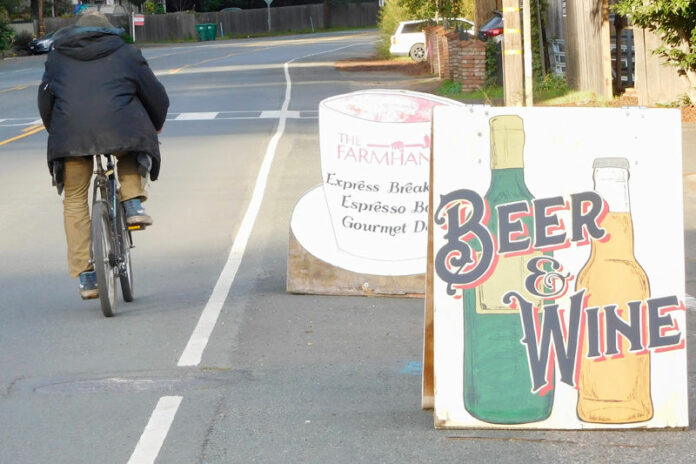
It may cost nearly $145 million to build the proposed Russian River bike path from Forestville to the Sonoma Coast, according to estimates in a feasibility study released last week.
Nevertheless the proposed lower river trial has garnered strong public support according to results of the new study that’s been under way for a year.
“A trail would certainly bring more businesses and would attract people to our vacation rental,” said Eric Peabody, a river area vacation rental owner and cyclist quoted in the study. “It would benefit guests by providing a safe place to ride a bike to reach nearby towns or as a nice stroller path,” said Peabody, 41, married and a father of two children ages 6 and 8. “It would benefit us.”
The 19-mile trail planned from Forestville to Jenner would require some expensive alterations along River Road and Highway 116 to create a car-free path from Mirabel Road to the coast, says the draft study now nearing completion.
“You can do it, but it won’t be easy” is a central message of the 202-page feasibility study compiled by Alta Planning + Design, the county’s planning consultant.
Big challenges include steep slopes, narrow road segments and private property acquisitions, if necessary. Trail plans include a new pedestrian bridge across the river next to the Hacienda Bridge, a cantilevered trail along the highway west of Monte Rio and barrier walls when necessary to give walkers and bikers a safe thoroughfare separate from motor vehicle traffic.
The high development cost “is attributed to construction methods that would require the use of pedestrian/bicycle bridges and cantilevered paths, acquisition costs, environmental mitigation, and site constraints such as limited public right of way, steep terrain and utility relocation,” said Sonoma County Regional Parks Project Manager Ken Tam in his report to the county Board of Supervisors last week.
Sonoma County Regional Parks planners will submit a final version of the trail study to the county Board of Supervisors for final approval next month, on Feb. 10, said Tam.
After that, Regional Parks will work on a budget including preliminary acquisition and engineering costs starting in 2020, but full trail completion will take years and will rely on get funding partners, said Tam.
Funding remains uncertain, numerous state and federal permits will be needed and acquisition negotiations haven’t even begun, according to the current study. Regional Parks officials intend to meet with property owners “over the next five to 10 years to obtain permission to use their private property for trail construction,” according to the study. “Initial conversations may result in agreements in principle or memorandums of understanding for rights-of-way.”
The study recommends prioritizing trail segments that are expected to serve the greatest number of users, both local residents and visitors, said Tam.
First priority is currently the segment from Rio Nido west to Guerneville along River Road, followed by the Guerneville to Monte Rio segment along Highway 116.
“The phases could be rearranged,” said Tam. At this point, “Everything is kind of in play.”
After the final study is accepted next month, the next formal opportunity for public input may be the California Environmental Quality Act (CEQA) process when Regional Parks must apply for permits and complete CEQA documentation.
The feasibility study can be accessed and comments may be submitted online at lowerrussianrivertrailstudy.com.







